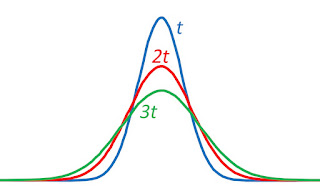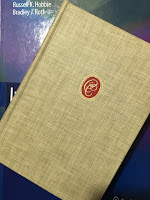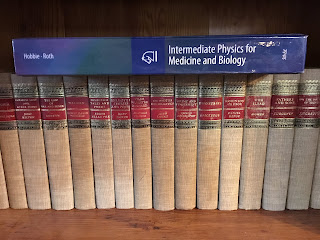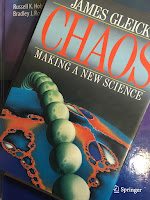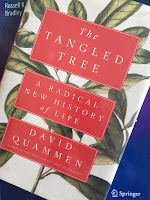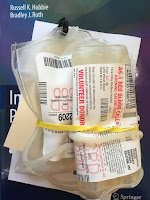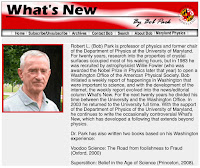Section 4.12
Problem 43. Dimensionless numbers, like the Reynolds number of Chap. 1, are often useful for understanding physical phenomena. The Péclet number is the ratio of transport by drift to transport by diffusion. When the Péclet number is large, drift dominates. The solute fluence rate from drift is Cv, where C is the concentration and v the solvent speed. The solute fluence rate from diffusion is D times the concentration gradient (roughly C/L, where L is some characteristic distance over which the concentration varies).
(a) Determine an expression for the Péclet number in terms of C, L, v, and D.
(b) Verify that the Péclet number is dimensionless.
(c) Which parameter in Sect. 4.12 is equivalent to the Péclet number?
(d) Estimate the Péclet number for oxygen for a person walking.
(e) Estimate the Péclet number for a swimming bacterium. For more about the Péclet number, see Denny (1993) and Purcell (1977).
The Péclet number is sometimes known as the Sherwood number.
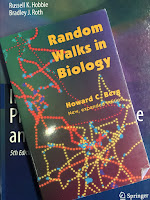 |
| Random Walks in Biology, by Howard Berg. |
Visualizing the Gaussian distribution: It is instructive to generate the [Gaussian] distributions shown in Fig. 1.3 experimentally [Berg’s Fig. 1.3 is similar to Fig. 4.13 in IPMB]. This can be done by layering aqueous solutions of a dye, such as fluorescein or methylene blue, into water. For a first try, layer the dye at the center of a vertical column of water in a graduated cylinder. The dye promptly sinks to the bottom! It does so because it has a higher specific gravity than the surrounding medium [See Sec. 1.13 in IPMB]. For a second try, match the specific gravity of the medium to the dye by adding sucrose [sugar] to the water. Now the dye drifts about and becomes uniformly dispersed in a matter of minutes or hours. It does so because there is nothing to stabilize the system against convective flow [flow of the liquid caused by density variations]. Any variation in temperature that increases the specific gravity of regions of the fluid that are higher in the column relative to those that are lower drives this flow [that is, if the bottom gets hot, the liquid there becomes less dense and rises, while the more dense liquid at the top sinks]. For a final try, layer the dye into a column of water containing more sucrose at the bottom than at the top, i.e., into a sucrose density gradient; a 0-to-2% w/v [weight per volume] solution will do. Match the specific gravity of the solution of the dye to that at the midpoint of the gradient and layer it there. Now, patterns for the sort shown in Fig. 1.3 [a Gaussian distribution] will evolve over a period of many days. The diffusion coefficients of fluorescein, methylene blue, and sucrose are all about 5 × 10-6 cm2/sec [5 × 10-10 m2/sec, consistent with Fig, 4.11 in IPMB]. A sucrose gradient x = 10 cm high will survive for a period of time of order t = x2/2D = 107 sec, or about 4 months [I am surprised it would last that long]. The dye will generate a Gaussian distribution with a standard deviation σx = 2.5 cm in a time t = σx2/2D = 6 × 105 sec, or in about 1 week. Try it!I get the impression he did try it. Berg continues
It is evident from this experiment that diffusive transport takes a long time when distances are large. Here is another example: The diffusion coefficient of a small molecule in air is about 10-1 cm2/sec. If one relied on diffusion to carry molecules of perfume across a crowded room, delays of the order of 1 month would be required. Evidently, the makers of scent owe their livelihood to close encounters [😉], wind, and/or convective flow.Diffusion is an effective mechanism to transport molecules over short distances, but it works poorly over long distances. The intuition we develop in our everyday life can sometimes mislead us when we think about small-scale biological processes. We generally live in a large Péclet number world. Cells, bacteria, viruses, membranes, and proteins operate at small Péclet number, where diffusion dominates. We can’t trust our intuition when discussing life at low Péclet number.

